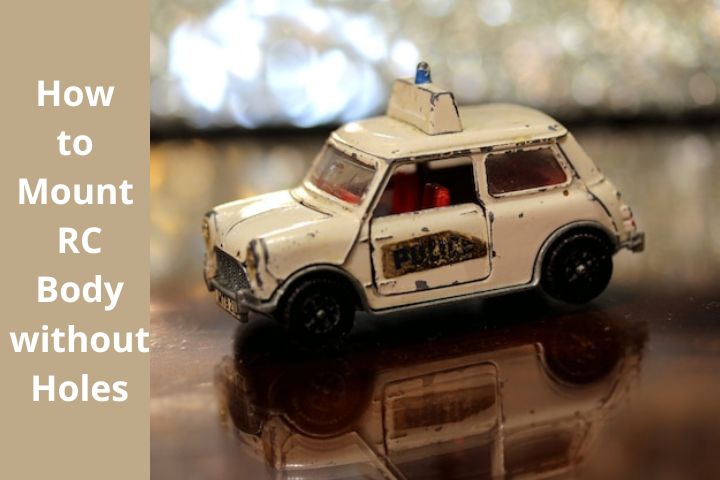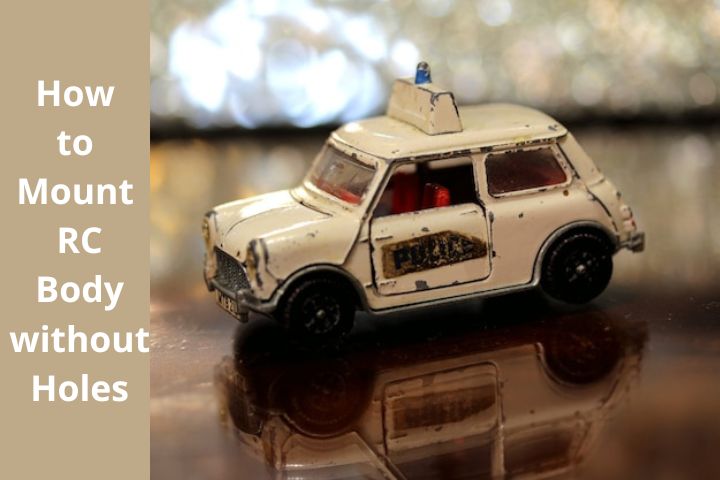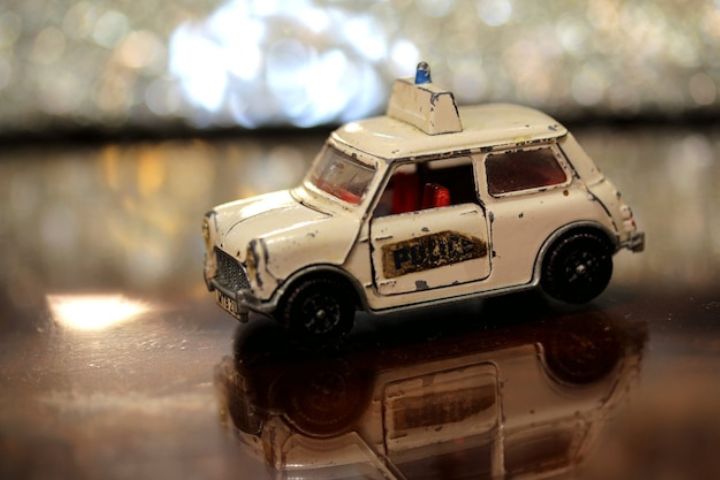
How to Mount RC Body without Holes? Installing a remote control (RC) body is an essential part of RC building, but traditional methods of mounting them with screws and wrenches are tedious and time-consuming. Fortunately, there is now a simple solution – mounting RC bodies without holes. This unique technique uses advanced epoxy glue to attach the body to the chassis, eliminating the need for drilling or tapping into the body. Not only is it more efficient, but it eliminates any visible signs that it was installed in this manner – no scratches or marks! As RC building becomes ever more popular, mounting RC bodies without holes will become an invaluable skill for hobbyists all around the world.
How to Mount RC Body without Holes
Using Magnets to Mount the RC Body
Magnets can be attached to the underside of an RC car body as well as the chassis of the vehicle to facilitate the mounting of a body onto the vehicle. Because of this, the body can be detached and reattached with relative ease, which makes it ideal for making modifications or getting repairs done. It is important to highlight, however, that the holding power of the magnets should be proportional to the weight of the body, and that the magnets themselves should be positioned in key spots to guarantee a safe and stable grip. In addition, if the magnets are too powerful, it may be difficult to remove the body, and if the magnets are too weak, the body may become detached while it is being operated.
Setting Up the Mount Post
To proceed with anything else, you will first need to take apart the body of the RC by unscrewing the screws and removing the clips. To properly assemble the magnetic body clips and a post, it is required to disassemble the body first.
The great majority of magnetic body clips already have mounting rods as part of the package. It is recommended that you go with the pre-packaged alternative wherever it is available due to the variances in RC posts that can be found between different models. Extensive fiddling with the car chassis, which destroys the post, also causes the post to be damaged. The best course of action in this situation is to remove the outdated post and install a fresh one in its place.
Install the Magnetic Body Clips
The magnetic body clips can be connected at any point after the mounting post has been successfully fastened. After inserting the clips into the post through the hollow side of the clips, gently press down on them. When the body clips are wider than the post, it is recommended that tape be used to bridge the gap between the two. If the post is narrower than the clips.
A tiny screwdriver can be used to further tighten the screw that is located on the head of the magnetic clip. As a consequence of this, the body clips will have a greater chance of retaining their initial position, which was vertical. If this is not the case, the impact of a major crash will cause the RC body to get stressed, and it may even break.
After that, the magnetic body clips and the hole in the mounting post both take the pin in their respective places. If the pin is not placed, the clip will become detached throughout the manipulation process. To ensure that the pin is firmly anchored in its position, you should apply some force when inserting it.
Mark the Magnet Head Position
After inserting the magnetic body clips, you should mark the position of the magnet head so that you can complete the extra configuration. First, detach the magnetic attachments from the body clips using the appropriate tools. The subsequent step is to fasten the clip assemblies to the top of the body of the radio-controlled vehicle. After that, arrange all of the magnets into the RC car in the manner that is demonstrated.
As soon as these magnets are moved into a location that is even closer to the body clip, the clip will be attracted to it, and the position will be altered accordingly. The next step is to invert the radio-controlled car and write a note with a pencil indicating the position of the magnet.
Setting Up the Magnet Head
The very last thing that has to be done is to adjust the magnet head. After applying standard super glue to the location shown, you should then position the magnet’s head so that it is firmly seated in the adhesive. If you do not have access to super glue, you can secure these heads using hot glue instead.
Strong neodymium magnets are typically included as standard equipment in magnetic body clips because of their low adhesiveness requirements. You won’t ever have to worry about having to peel it either. However, the degree of stickiness will not reach its peak until the glue has had a chance to dry.
The final step is to position the magnet head such that it is on top of the radio control vehicle. As a direct consequence of the magnetic clips, the overall height of the radio-controlled car can be seen to have increased.
Using Velcro Tape to Mount the RC Body
Velcro tape is another option that may be utilized to secure the RC chassis without the need for any holes to be drilled. Due to the high level of stickiness that Velcro currently possesses, it is now able to provide a secure grip regardless of the weight of the RC car.
Although the installation of this magnet is much simpler than the installation of the other magnet, you still need to be careful and follow the directions in order to have the body attached in a short amount of time. I would appreciate it if you would allow me to swiftly go over these procedures with you.
Open Up the RC Body
To get started, remove the clips that are attached to the RC mount post. Both the front and the back of the RC are equipped with clips. To release the grip on these clips, you need only to nuzzle them to the side.
When you initially attempt to make modifications to the RC, removing these clamps could need a small bit of force on your part. Disassemble the RC frame by loosening the clamps holding it together. While you are working with the Velcro tape, make sure the body stays out of the way.
Adjustment of Mounting Post
After you have completed cutting the hole, you may now make any necessary adjustments to the mounting post. It is advised that a new post be installed in the event that the existing one has been compromised.
There are a few different sorts of mounting posts, and some of them include a thin plastic plate that is not large enough to house the Velcro. If you are still experiencing this issue, you might want to try using a larger plate. When you crash on the track while wearing Velcro tape, it will come unattached from your clothing.
Install the Velcro Tape
As soon as you have completed writing the piece, we may go on to the next step, which is to apply the Velcro tape. Utilizing double-sided Velcro tape makes for a straightforward application process. Before you can apply the tape to the huge sheet of plastic, you will first need to peel off the backing from the tape.
If you don’t have any double-sided tape, you can substitute single-sided tape instead. First, a layer of superglue should be spread on the huge plastic plate. After that, secure the plate by placing the tape onto it in a careful manner. If the width of the tape is less than the width of the post, you can cover the gap with a thin strip of wide paper board. This works only if the width of the tape is less than the width of the post.
Mark & Set the Velcro on RC Body
Now is the time to fasten the Velcro onto the chassis of the remote control. However, if you want the adhesiveness to be particularly strong, the location where it will be applied must be noted. It is preferable to first scuff up the tape with a marking pen in order to better prepare it for the RC body to be laid on top of it. When you press down on the body of the RC car, a mark is left behind on the interior of the vehicle.
After determining where on the RC car the tape should go, peel off the backing and secure it in place using the adhesive side. If the tape is not double-sided, you will need to use superglue to affix the Velcro to the location that you have designated.
Before the glue has had a chance to dry, it won’t have the right amount of stickiness. To complete the task, place the remote control unit on the base, and then use your thumb to press down on the Velcro tape. The addition of these Velcro straps does more than simply make the RC chassis more convenient; they also raise the chassis’s overall profile.
Using Adhesives to Mount the RC Body
Mounting the body of an RC car to its chassis can be accomplished with the assistance of adhesives like double-sided tape or silicone caulk. This approach provides a solution that is more lasting and is useful for racing or other high-performance applications where a secure grasp is required.
To use double-sided tape, first, wipe the surface of the chassis and the bottom of the body, then apply the tape to both surfaces, and finally, press the body onto the chassis until it is secure. If more tape is required, it can be used to provide the desired secure hold.
There is also the option of using silicone caulk to mount the body, which is a method that works particularly well for surfaces that are uneven or irregular. After the components of the chassis and the underside of the body have been thoroughly cleaned, a dab of caulk should be applied to the chassis. Apply pressure to the chassis, then press the body onto the chassis and keep it there until the caulk has set. This method, while stronger and more long-lasting, is difficult to undo once it has been applied.
It is essential to ensure that the adhesive is applied uniformly and in a manner that does not impede the operation of any of the car’s mechanical or electrical components.
The following is a step-by-step guide to mounting an RC vehicle body using adhesives:
• It is important to thoroughly clean the underside of the body as well as the surfaces of the chassis. By doing this, we can assure that the glue will adhere correctly.
• If you are going to use double-sided tape, make sure the tape is cut to the right size and that it adheres to both surfaces (chassis and bottom of the body).
• If you are going to be using silicone caulk, you should spread a tiny amount of it evenly throughout the chassis after you apply it.
• Put some pressure on the chassis, then press the body into the chassis, and keep it there for a few minutes, or until the adhesive has set.
• Verify that the body is installed properly and that the glue has not impeded any of the car’s mechanical or electrical components. Also, check sure that the body is not loose.
• In order to guarantee a firm grip, if additional glue is required, add it.
• Before utilizing the remote-controlled car, allow the adhesive to fully cure for the amount of time that was specified.
It is essential to keep in mind that, before utilizing the adhesive, it is preferable to determine whether or not it is compatible with the plastic substance that makes up the body. In addition to that, any extra glue must be removed cautiously before allowing it to cure to avoid any complications when driving the vehicle.
Also Read: How Do RC Cars Work
Conclusion
The need for mounting components on an RC body without making any holes is becoming increasingly important. Many RC vehicles have been designed with parts that do not like being drilled into, and this has minimized the longevity of many RC models. What’s more, if the holes are too large, it can lead to the part becoming loose and potentially dangerous when racing or going through rough terrain. Fortunately, there are now ways to mount components on an RC body without having to drill any holes. This includes using 3M adhesive transfer tapes that securely attach parts while still allowing easy removal in case of maintenance or customization needs. By using these methods, RC enthusiasts can enjoy more freedom with their models without compromising on safety and performance.


